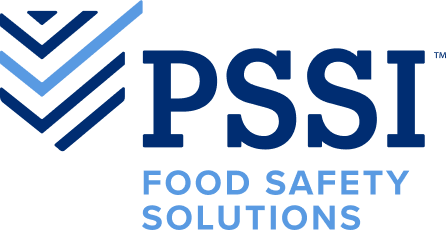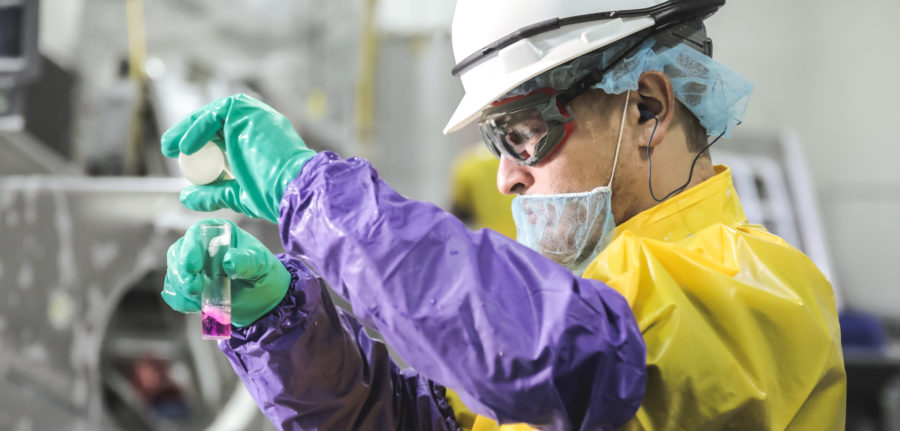The food industry across both the FDA and USDA continues to face major issues as it relates to food safety. A recent Stericycle Recall Index report shows USDA recalls increased 62 percent in Q4 2018, with 52.4 percent resulting from bacterial contamination. Salmonella in particular, was the leading cause of the USDA recalls.
PSSI is dedicated to make a positive and sustainable impact on Food Safety challenges. Processors across the industry need better confidence in the safety of each and every product, every day.
The truth is, we live in a world of infinite micro-organisms that create and support life around us, but some that can pose a serious threat to the health of consumers if not managed appropriately. Pathogenic (disease-causing) microbes are a threat to human health, and they can cause huge economic problems as well.
The wet and humid environments inside food processing facilities in particular, can be a breeding ground for dangerous pathogens like Salmonella, Listeria monocytogenes and E. coli. Microbes, including bacteria are impossible to see with the naked eye. Specialized training is required to use the right tools and techniques to inspect and appropriately test for various bacteria. What might look visually ‘clean’ to any normal person, could actually be a non-sanitary environment housing deadly bacteria or other microbes.
Microbiology plays a critical role in the development and management of sanitization plans to not only eradicate, but most importantly prevent microbiological hazards before they become larger issues.
The most common issues result from a harborage (or niche) which is typically a small hard to reach gap or crevasse where soils and food debris can buildup. These harborage spots can also occur on food manufacturing equipment – including damaged/scratched food conveyor belts, uncleanable designs of parts that are not intended for some food product, or other root-causes for microbes persisting in the production facility. Hotspots can also include drains, ceiling leaks, cracks in walls/floors, material handling equipment, or areas that may have accumulated standing water and soils/food residues.
A food or soil buildup that becomes chronically exposed or contaminated with microbes, including pathogens such as Listeria monocytogenes can result in critical food safety risks very quickly, if not identified and resolved.
Worst case, the food residue buildup can result in a biofilm. A biofilm is a tough, persistent buildup that has living bacteria embedded and available to shed off and cause contamination issues on food products. The buildup of biofilms can also cause physical problems, such as barnacles on the hull of a ship, or layers of buildups that can cause equipment problems and even impede fluid flow in pipes. Bacteria can and will continue growing and spreading in biofilm, which means that a food residue buildup can quickly become a risk situation that may result in contaminated food and risks to the consumers of the food. Bio-films are sometimes very tough to locate so it is important to have trained professionals who know how to look for possible sites that would be a risk for buildups and have the right conditions for bacterial biofilm development.
There are a number of reasons these buildup issues can occur even with consistent cleaning, including:
- Inadequate cleaning time or appropriate staffing of trained sanitation workers
- Inaccurate chemical concentrations or other chemical issues
- Facility issues like loss of hot water, or inconsistent water pressure during sanitation
- Non-hygienic equipment design, and older equipment that is not designed well for full, deep cleaning
- Significant equipment damage (ex. deep scratching or gouges, bad welds, cracks and holes, etc.) to food-contact surfaces and to areas prone to food contact and residues
- Water-sensitive or chemical-sensitive equipment design and electronic configuration – cannot wet clean
- Inability to reach all areas in drains to prevent food residues, food oils/fats and general soils from lingering and even building up slimy residues
Proper chemical selection and mixture strengths, water temperature, hand scrubbing surfaces and taking adequate time to clean completely are all crucial factors to prevent the food debris buildups and potential biofilm formation.
PSSI has both the trained resources and scientific expertise to handle any sanitation or food safety risk situation. Its team of trained sanitors, food safety specialists, and microbiologists, work together to proactively identify hazards and develop specialized cleaning techniques to prevent issues. The company is also one of the only sanitation providers with its own in-house chemical partner, Packers Chemical. This partnership ensures consistent chemical potency from a preventative perspective and plays a critical role in urgent, high risk situations when action needs to be taken quickly and specific chemical formulations may be required.
Packers Chemical developed a proprietary BioFilm Remover, which is a special blend of active enzymes that will get rid of food residue and soils buildups. However, it must be applied correctly under direct guidance from a trained chemical applicator. They also have special drain tools (i.e. The Stinger) that clean hard to reach drain areas more effectively and prevent possible contaminating droplets from getting on equipment surfaces.
Documentation is another key component to pathogen management and microbial issues. PSSI provides audit-ready documentation of all sanitization efforts, including chemical titrations and cleaning logs, to help support any concerns or questions that arise.
The question is not if, but when as it relates to microbiological situations in food processing. The two keys are being prepared with the right experts and resources to proactively stay ahead of problems and minimize potential risks. And be fully prepared for an urgent, high-risk situation, if and when it occurs.

